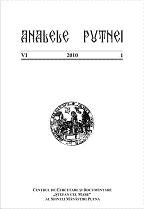Tradiţie şi adevăr istoric. Despre două icoane emblematice ale Mănăstirii Putna
Tradition and Historical Truth. About Two Emblematic Icons from the Putna Monastery
Author(s): Marina SabadosSubject(s): History
Published by: Centrul de cercetare şi documentare ŞTEFAN CEL MARE
Keywords: tradition; triptych; Tsar’s painters; western influence; wonderworking icon
Summary/Abstract: The Deisis triptych and the Virgin with the Child wonderworking icon from the Putna Monastery are two renowned pieces of sacred art that are linked, according to tradition, to the founder of the monastery, Stephen the Great. The paper makes an iconographic and stylistic analysis of the painting of these icons, in order to establish the historical truth about their paternity and dating. Consequently, the triptych, which is considered to have been the possession of Stephen the Great himself, proved to be a Russian work from the first quarter of the 17th century, comparable with the icons written in the “Tsar’s workshop” in Moscow. The study of the wonderworking icon, about which tradition says that Stephen the Great had brought from Constantinople, being venerated by many generations of Putna monks (in 1755, on the initiative of Metropolitan Jacob of Putna, it received a silver cover), led to the conclusion that the painting stylistically corresponds to the art of the 17th century Ruthenian painters, who were influenced by the Western Renaissance and Baroque painting. It is possible that the 17th century icon had been written on an older panel, hypothesis which is suggested by the unusual vertical alignment of the battens.
Journal: Analele Putnei
- Issue Year: 2010
- Issue No: 1
- Page Range: 33-48
- Page Count: 16
- Language: Romanian
- Content File-PDF

